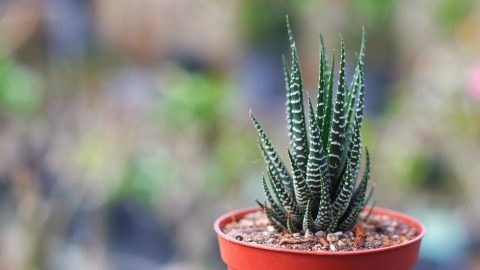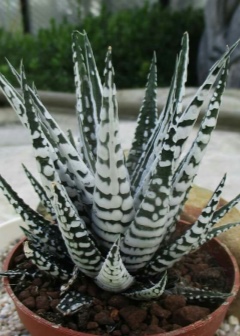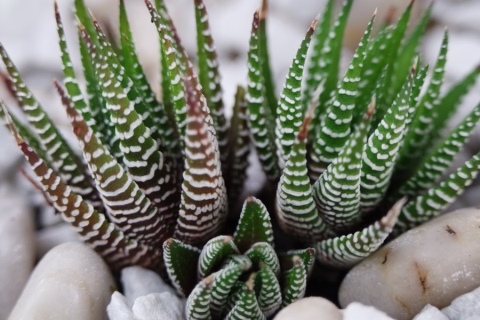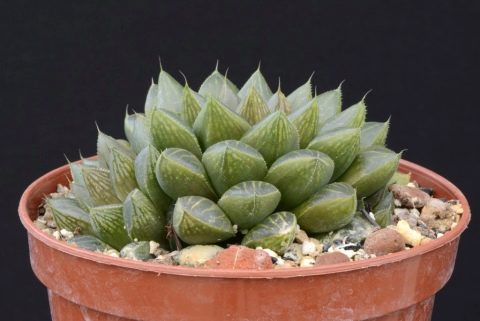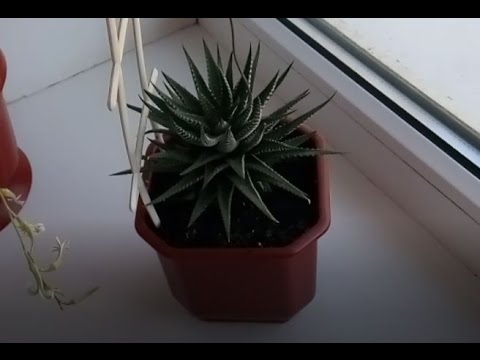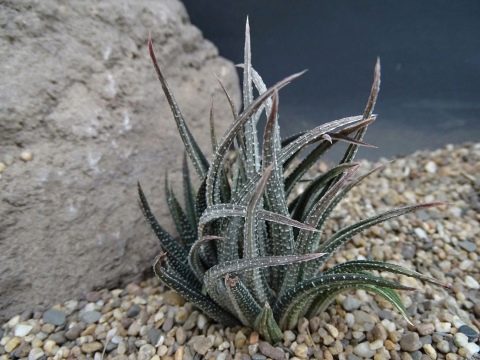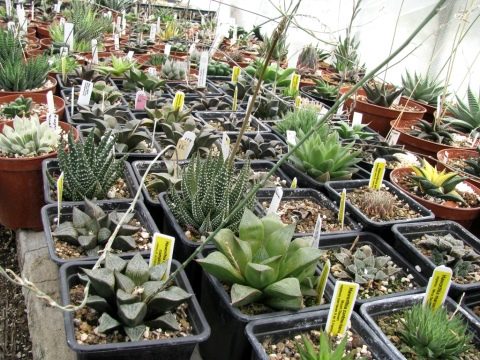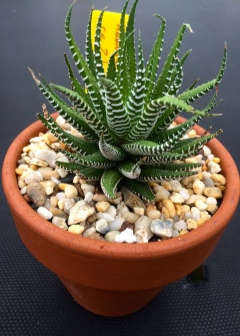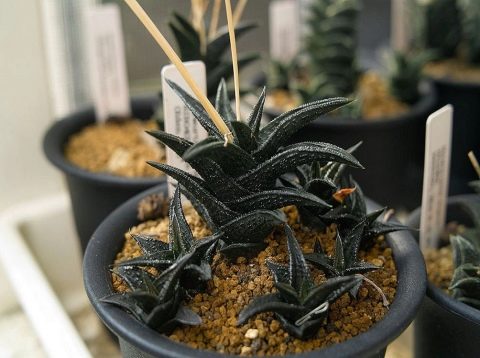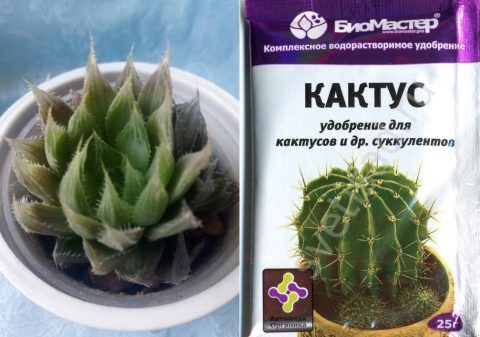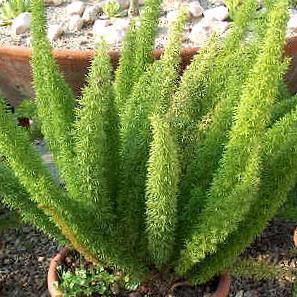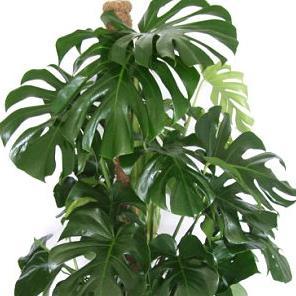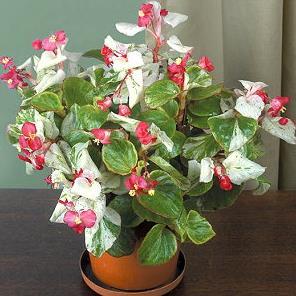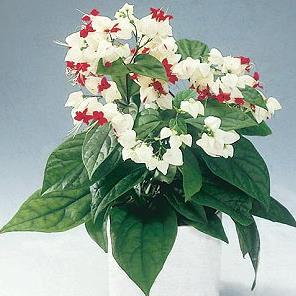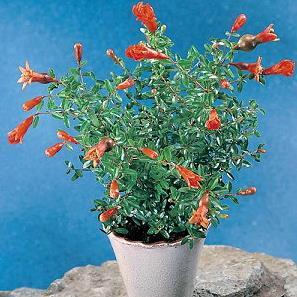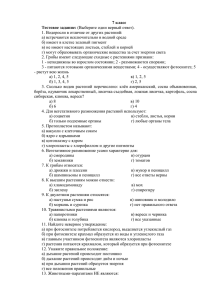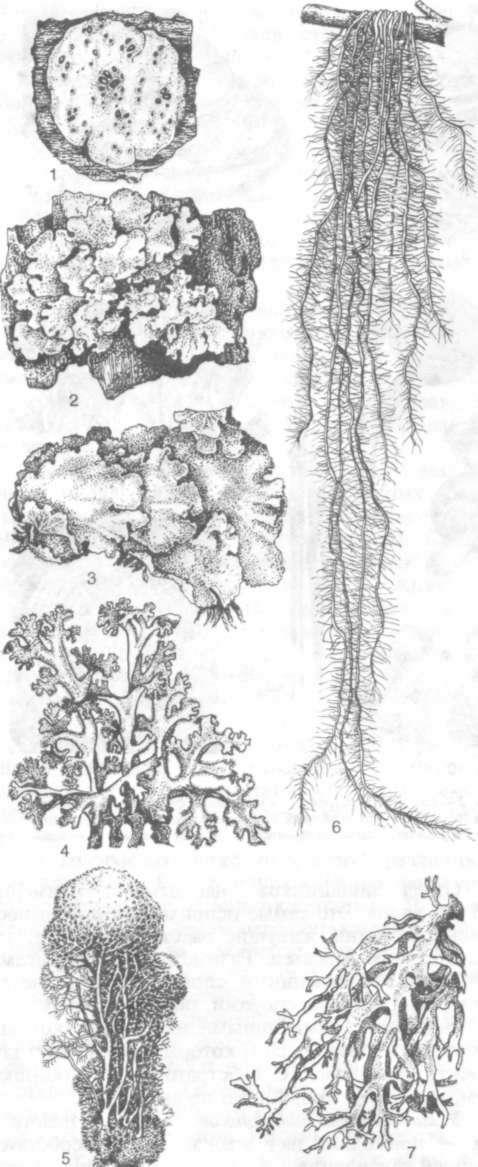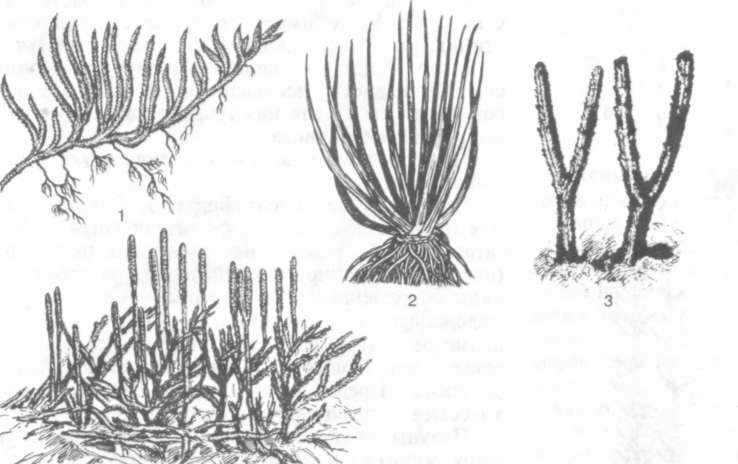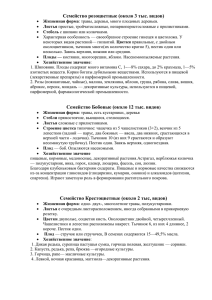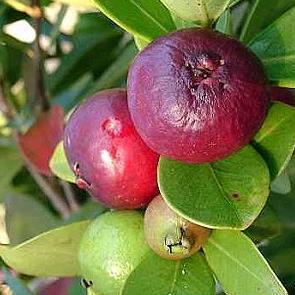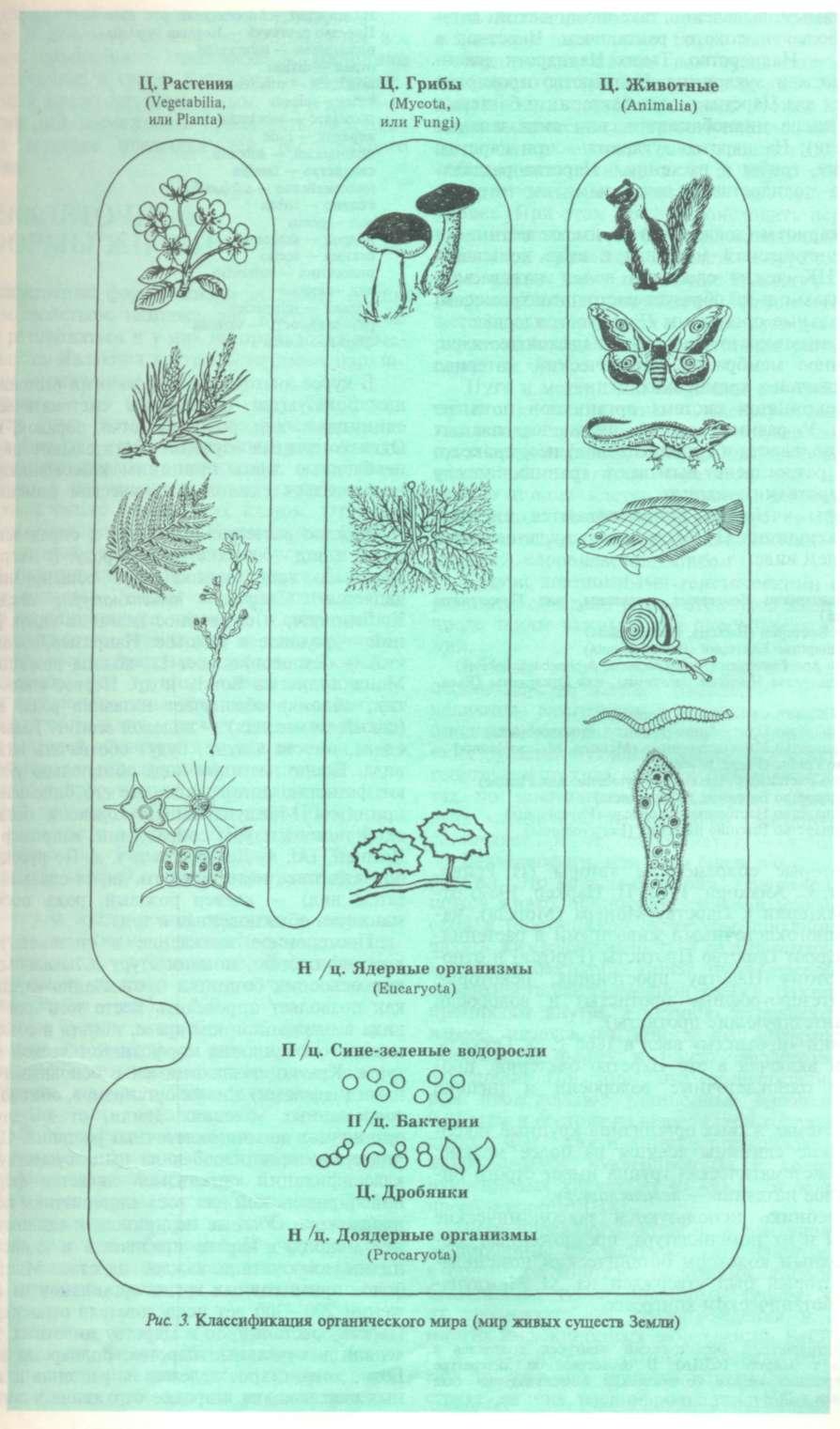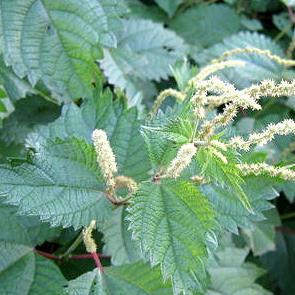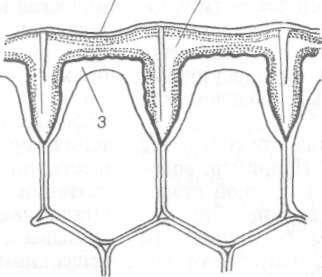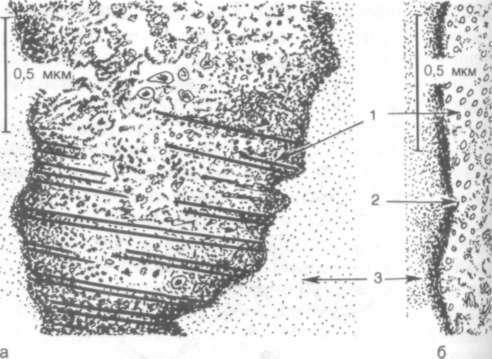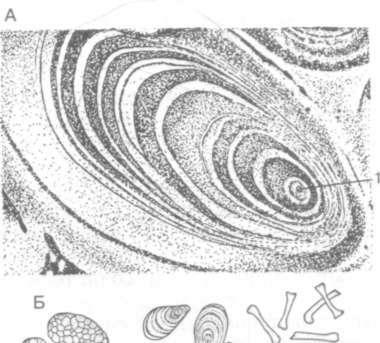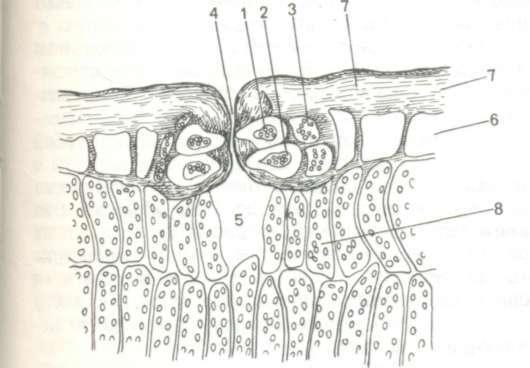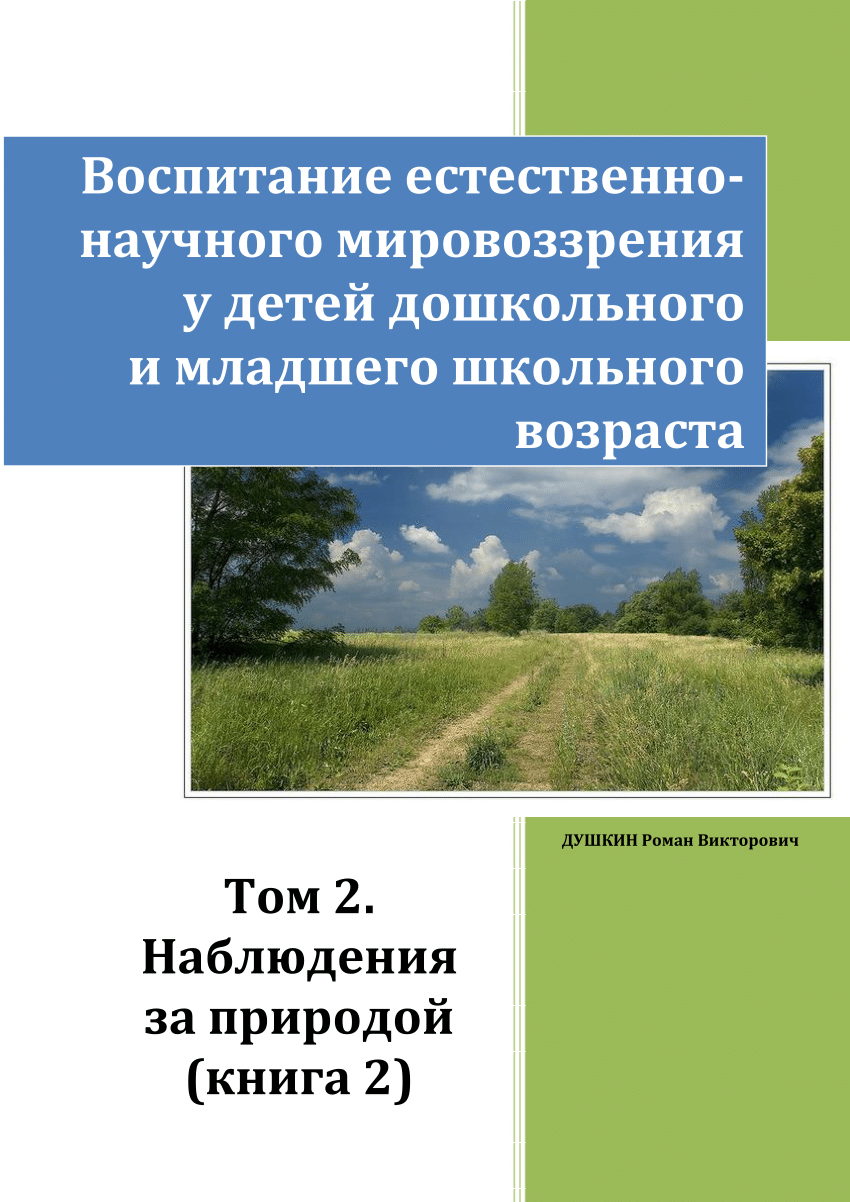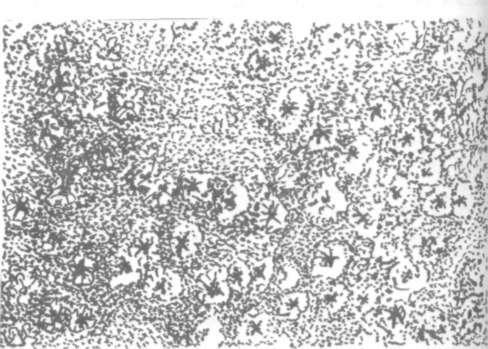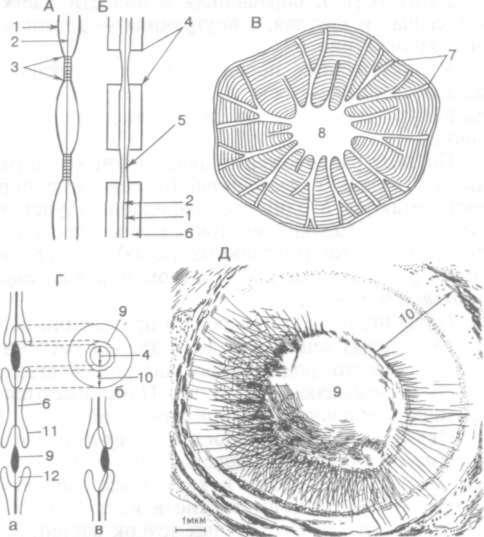Types of Haworthia with photos and descriptions
Haworthia fasciata
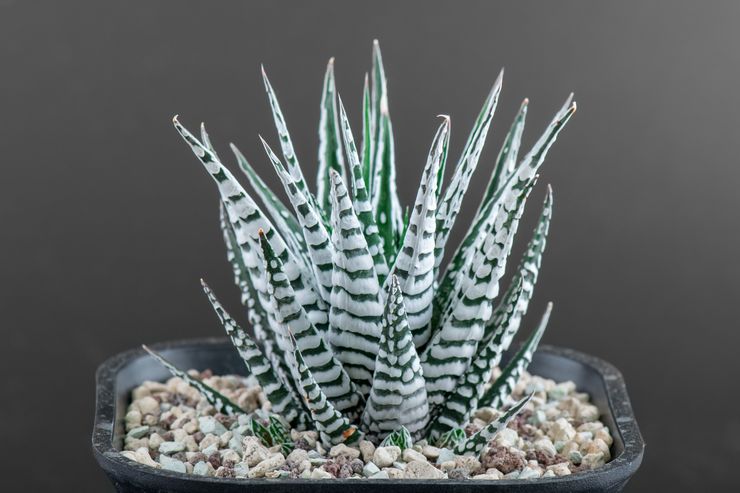
Barrelless perennial. The bush is made up of several tight rosettes of thick oblong leaves. From the inside, they have protruding white stripes, and from the front side they are painted in a uniform green color and have a smooth surface. The length of each leaf reaches 5 cm, and the width is no more than 1.5 cm.
Haworthia attenuata

In terms of its characteristics, the look is similar to the striped havoria, but it looks less elegant. Its leaves are decorated with raised dots, which have both a contrasting white and green color. The leaf blades are longer - up to 7 cm wide 1.5 cm.
Haworthia tortuosa
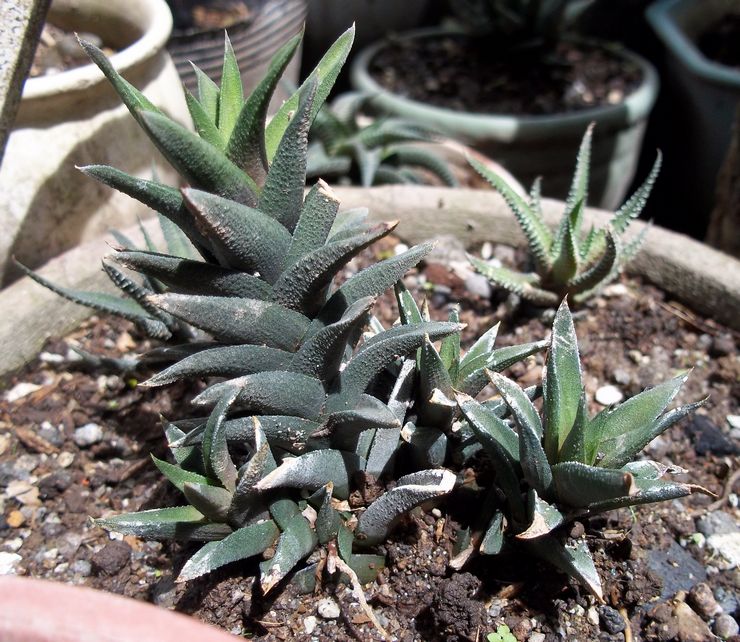
This species is also known as the twisty aloe. It is distinguished by a small stem, reaching no more than 15 cm in height. The leaf blades are dark green and short - only up to 2.5 cm in length. There are small growths on the convex seamy side.
Haworthia viscosa
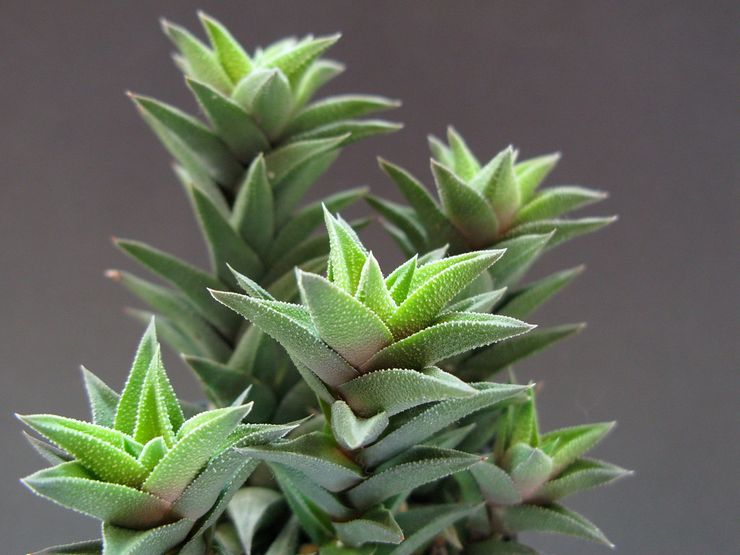
Bushes can vary in height, but usually it does not exceed 20 cm. Leaf blades in rosettes form three vertical rows. The length of each leaf is small - about 2.5 cm. Each leaf has a bent tip, at the base it is dark green, and closer to the edge it acquires a reddish tint.
Haworthia navicular (Haworthia cymbiformis)
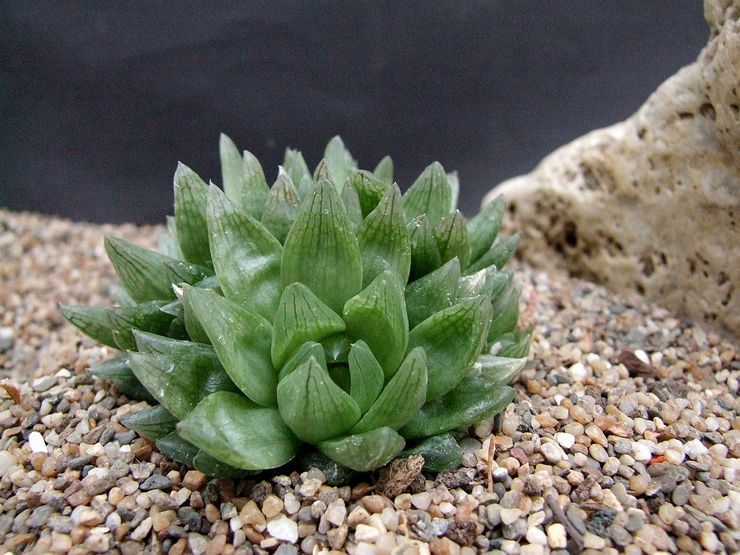
The leaves of this variety are indeed rook-shaped. They are uniformly colored in light green tones. The rosette of such a haworthia reaches about 10 cm in diameter; in the presence of side shoots, a plant bush in the width can be about 20cm... On the leaves, there may be translucent windows that facilitate the penetration of sunlight.
Haworthia pearl (Haworthia margaritifera)
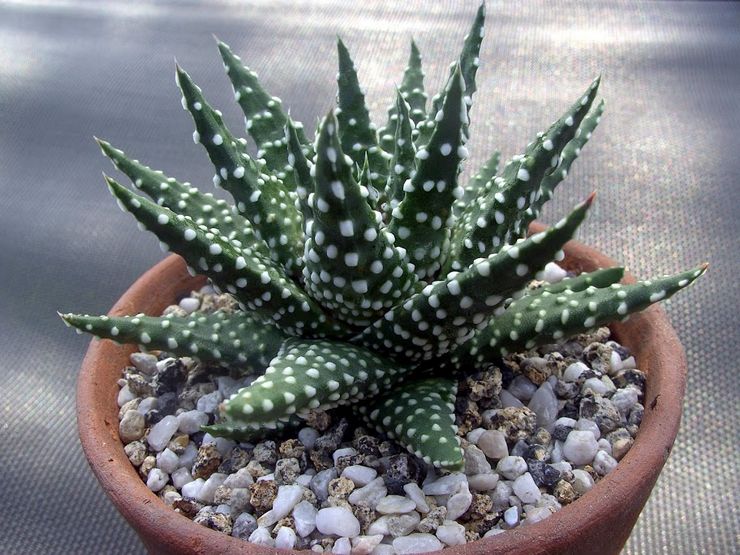
The stem of the pearl haworthia is almost absent. The outlet includes dense and rigid leaves, pointed to the top. Their length reaches 8 cm, and their width is up to 2.5 cm. On all sides, the dark green foliage is covered with rounded convex specks of white color, larger than those of other types of haworthia. Their presence makes the plant especially spectacular. During flowering, an inflorescence-brush of small greenish flowers is formed on the bush. After its completion, the main plant dies, being replaced by daughter rosettes.
Haworthia chess (Haworthia tesselata)
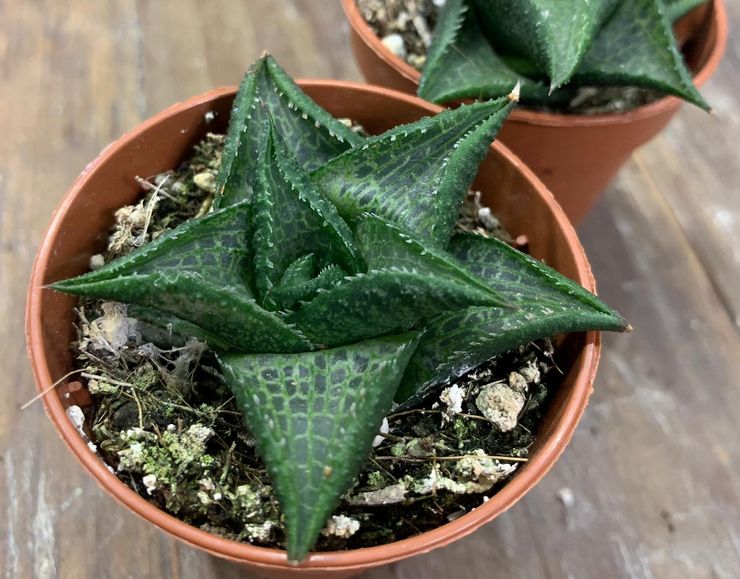
The fleshy leaf blades are triangular in shape and jagged edges. The main color of the leaf is greenish-brown, with a light mesh pattern. There are small growths on the inside of the leaves.
Haworthia reinwardtii
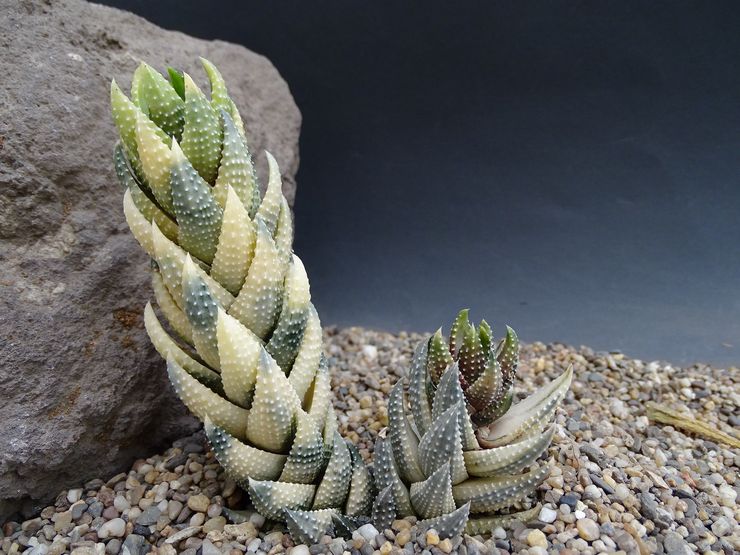
The rosette of this Haworthia is extended upwards. It is formed by thick triangular leaves arranged alternately. Their length is 3.5 cm, their width reaches 1.5 cm. On the seamy side, rich green leaf blades cover noticeable white dots, which stand out due to their convex shape.
One of the varieties of Reinwardt's Haworthia - "zebrina" has more contrasting white bulges, and its leaves are larger. Young bushes are distinguished by straight stems, which over time bend and lay down under the weight of the weight.
During flowering, it forms a long (up to 1 m) peduncle with yellowish-green flowers.
Haworthia retusa

Refers to varieties that have windows. Triangular thick leaves are slightly bent on top. Their length reaches 5 cm. The seamy side is painted in green or brownish tones, and on top the leaves have light strokes and stripes resembling the color of a watermelon. There are varieties that are almost devoid of green color, as well as more pronounced variegated varieties. The "Gigant" variety stands out for its particularly large foliage with veins on the top.
Cacti and Succulents Houseplants
Description
Haworthia is a graceful perennial. The first copies were brought to the territory of European countries in the 18th century.The homelands of Haworthia are Southwest and South Africa. The plant is named after the famous foreign botanist Adrian Haworth. To date, more than 150 species of the represented plant are known in the botanical environment. In appearance, the flower looks like a cactus, but when you touch the Haworthia, you immediately feel the difference.
This home-grown succulent plant can grow up to 30 centimeters in height. Its leaves are dense and rather fleshy. In shape, the plant resembles a rosette, which is located on a small stem and is barely visible to the naked eye. The surface of the leaves is smooth to the touch, sometimes with bulges that stand out in white. For each individual type of haworthia, the edges of the leaf plates differ in structure. They may resemble a jagged edging, the edges of the sheets of other specimens are completely smooth, and the tips of the sheet are endowed with a sharpened angle.
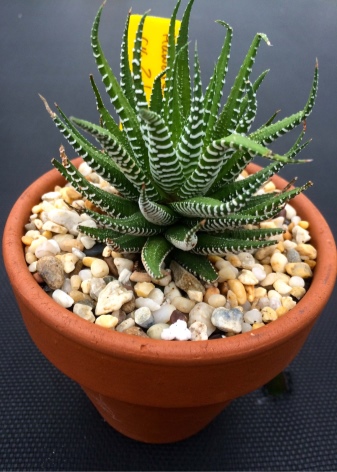
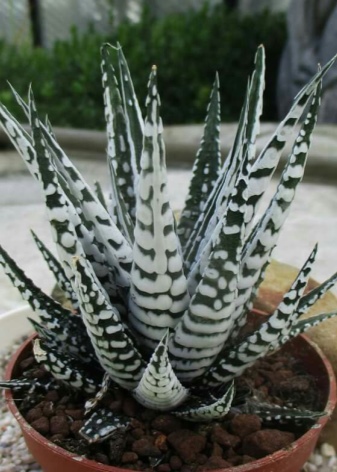
Very often, haworthia is confused with other representatives of a flowering garden, for example, with aloe. And only experienced florists can immediately tell the difference between them. Firstly, aloe does not dissolve children, while Haworthia has a lot of them. Secondly, ribbed grooves are clearly felt from the bottom of the haworthia leaf plates, the surface itself is slightly rough. Aloe does not possess the presented features. If you want to grow the described succulent, novice growers are worried that a plant native to Africa may turn out to be poisonous. In fact, poisonous substances are present in the haworthia plant juice, but in low concentration, which will not harm the human body.
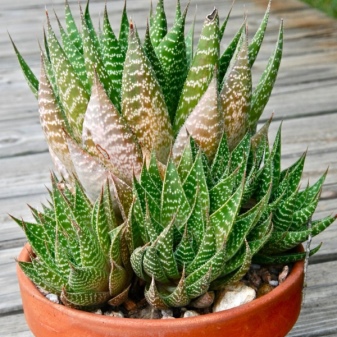
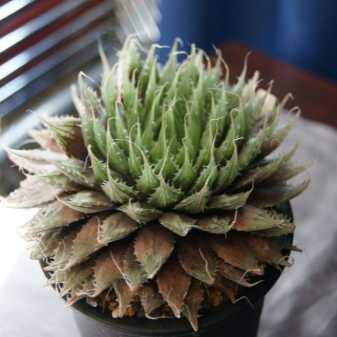
Necessary living conditions
These flowers are convenient because, with all the variety of species, they need almost the same conditions. Yes, and providing such conditions will not be difficult, because life in the deserts has made haworthy real stoics, ready to endure all adversity.
Lighting
The lighting for Haworthia needs bright, but, surprisingly, not in direct sunlight. The secret is simple: in their homeland, squat rosettes always try to hide under stones, snags, in the shade of rare desert trees. If Haworthia is in a hard direct sun (for example, on the southern balcony), it will not die, but the color of the leaves will become brown, dull. The best place for a flower is the sills of the east and west windows. Can be kept in the south, a little shading.
Temperature
Summer temperatures for the Haworthia flower can be in a fairly wide range: from + 16 ° C to + 30 ° C; in winter it is desirable that it becomes cooler, + 10 + 12 ° C. Here, too, the resistance of the plant is revealed: it is able to safely survive even lower temperatures, up to +6 + 8 ° C, falling into deep hibernation. But it will also have a good winter at + 18 ° С: a real find for a careless florist!
Air humidity
Relative to air humidity. This is one of the rare indoor plants that calmly refers to the complete absence of spraying and all sorts of tricks associated with an increase in humidity. Anyway, your apartment will never be as dry as in the Namib Desert.
Important! Knowing this, some amateurs make one mistake: in winter, without lowering the temperature, they place haworthia near the heating battery. This is extremely bad for the condition of the plants, because the winter time for them is a time of rest.
If you have already decided to keep them warm during this period (which in itself is not entirely correct), then the humidity must be increased at least to average values.
The soil
The soil in the pot where the Haworthia grows should not be constantly wet, it must definitely dry out, at least a third of the depth of the layer. There should be no water in the pan. The moisture of the substrate is especially dangerous in winter.
Reproduction methods
Haworthia reproduce by seeds or vegetatively - stem, and sometimes leafy cuttings. Some species can release side shoots - stolons.They are also suitable for breeding.
To obtain seeds, the most interesting species from the point of view of a florist are pollinated among themselves. In case of successful pollination, ripe seeds are collected and sown in a moist, mostly sandy substrate. To create a warm and humid microclimate, cover with foil. Maintain a temperature of +20 ℃. Plants develop slowly, an adult developed specimen can be obtained in two years.
To propagate succulent with stem and leaf cuttings, they are dried before planting. This process, depending on the size of the cutting, can take 1 to 2 days. Then the cuttings are placed in moist coarse sand or perlite, where rooting takes place.
Propagation by cuttings
Daughter sockets are separated during transplantation. The cut is sprinkled with charcoal and young plants are planted in separate pots. This option is the simplest and allows you to get a well-formed socket in a short time.
Interesting to know! The natives of South Africa consider Haworthia to be a medicinal and miraculous plant. They plant haworthia on rooftops and decorate homes with potted succulents, hoping that the plants will protect homes from lightning and the influence of negative energies. Especially appreciated by healers haworthia limifolia (haworthia limifolia).
In some places, the demand for useful plants is so high that, to satisfy it, the question of obtaining haworthia by micropropagation is being considered.
Views and photos
Below are photos, names and descriptions of types of gastria suitable for reproduction and care at home.
Warty (Gasteria verrucosa Haw.)
It is warty Gasteria that flower growers love to grow more than others: it is considered one of the most beautiful and uncaptious. This perennial does not have a stem, but many rosettes depart from the mother. The leaves are elongated, with pointed tips, can grow up to 20 centimeters in length. The surface is covered with white pimples.
The inflorescence growing in the axil is racemose, from 40 to 80 cm high. Flowers - no more than 2.5 cm, have a cylindrical perianth and a small swelling at the base. The photo below shows Gasteria Warty:
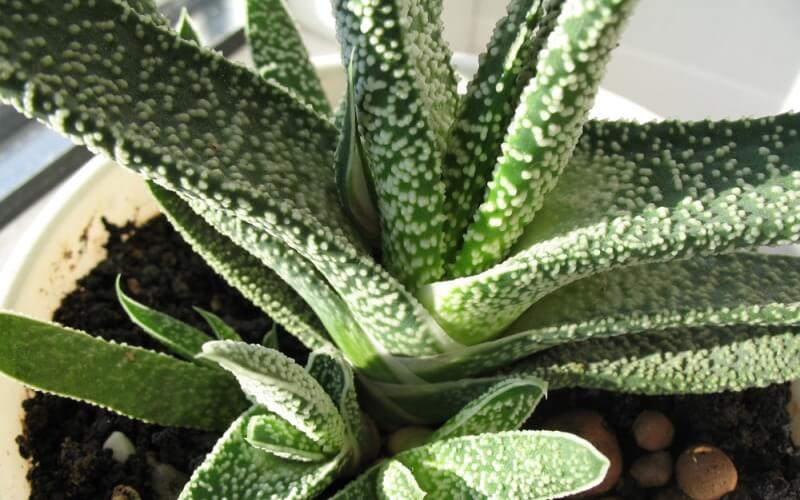
Spotted (Gasteria maculate Haw.)
This variety does not have pimples, but the number of stripes and spots cannot be counted. Silvery, brown, green - they cover the leaves both outside and inside. The leaves themselves grow opposite each other (on young Gasteria) and spiraling (in adults). Sharp, hard thorns grow at the ends of the leaves. Another feature of the variety is the presence of a trunk 30 cm long.You can see how the Gasteria Spotted variety looks like in the photo below:

Keel (Gasteria carinata Haw.)
The clue to the name lies in the shape: the leaves have long projections on the underside, reminiscent of the keel of a ship. They are devoid of pimples, like the rest of the leaves. The plates do not grow opposite to each other, but in a spiral, painted in a light green color with a light white dusting. In the photo below, the Gasteria Kilevataya variety:
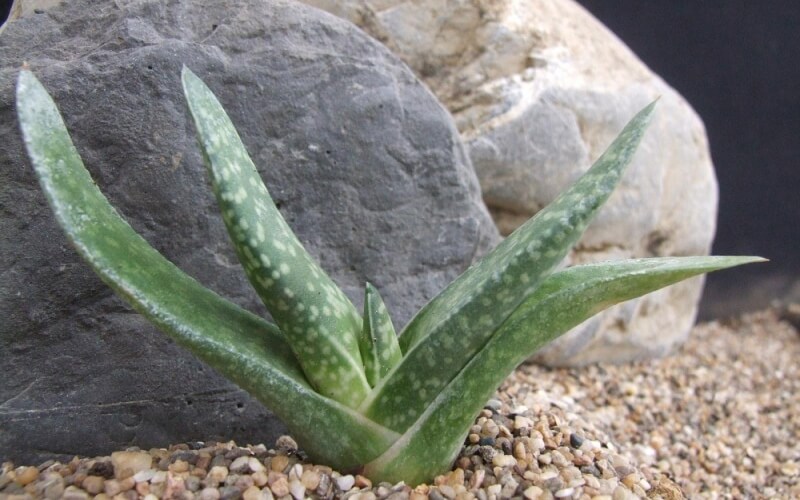
How to properly care for a haworthia indoor flower?
Indoor plant lighting At home, the care is the same for all types of haworthia. Indoor plant grows well and reproduces.
They place the Hawortia in a bright place, inaccessible to the direct rays of the sun. The best places for haworthia are the west and east windows. When placed on the south side, shading is required, and the lack of light on the north side causes a loss of brightness in the color of the leaves.
dormant period
Winter is a dormant period. The plant is transferred to a cool place away from the heating system with adequate lighting. At uncomfortable temperatures, the leaves darken and rot.
From the balcony or veranda, the pot is brought into the room at night from the end of summer. With the beginning of autumn, the plant is constantly in the house.
watering
Watering is moderate. From spring to autumn - no more than twice a week, in winter:
- at a temperature of 10-12 ° C every 30 days
- at a temperature of 13-15 ° C every 21 days;
- at a temperature of 18-20 ° C every 14 days.
The soil surface of the succulent is slightly moistened: the top layer of the Haworthia substrate should dry out by a third between waterings. With an excess of moisture, root rot is possible.
Water should not get into the center of the bush so that the root outlet does not rot. In summer, no water should remain in the sump.
Humidity
Moisture does not affect the growth of a flower. Spraying is not required. In summer, the container from the Haworthia is taken out to the balcony or garden.
From the beginning of spring to the end of summer, the plant is fed. Use a weak solution of special fertilizers for succulents or ornamental plants once a month. With an excess of nutrients, the leaves change color.
How to transplant Hawortia correctly
Young plants of any species of Haworthia are transplanted and renewed every two to three years, when the pot is small. Adult specimens - every two years. If the roots die off during the dormant period, replanting must be done immediately.
Which needs a pot for a plant
The capacity is needed wide, low, shallow. In very large pots, the Haworthia grows in depth, not upward. Too tight a pot is the reason for the shallowness of young leaves.
At home, for haworthia, the best pot is a plastic round. The square roots bend and rot.
the soil
Succulent grows well in a mixture of clay, sand and beaten shell rock. The soil is required slightly alkaline or neutral. In acidic soil, the plant dies; good soil drainage is essential. Land - an equal amount of clay-sod land, sand and leafy land. You can use pieces of lava and pumice stone by adding some soil to them.
Brick chips regulate the moisture well in the pot. But its breakdown into small components worsens the structure of the substrate and harms the flower. It has to be replanted annually.
How to propagate haworthia
The best time to breed Haworthia is spring. Breeding methods:
- children: during transplantation, the roots are taken down children are rejected in separate pots. A daughter root rosette without roots is planted in a moist substrate before rooting.
- Seeds: It is more difficult to propagate Haworthia by seed. It takes a long time from planting to sprouting. This method is suitable for breeders and lovers of rare types of home flowers.
- leaves: can be cut off from the mother bush. It is left to dry for two days, planted in loose soil, soil slightly moistened with water, or a sandy substrate. Or do not water the plant for a month. During this time, it gives roots. The seedling is not watered for three weeks. During this time, the first roots appear.
Optimum temperature for growing
The optimum temperature for a flower is 15-20 ° C in summer. In winter - 10-12 ° C. At a lower temperature, the plant dies.
Features of keeping at home
Haworthia is unpretentious. Keeping and reproducing it at home is not particularly difficult. Even if you are a beginner gardener, and you just do not have time to fully care for the plants, but you want to have them, Haworthia is exactly what you need. Observing simple rules, you will cope with the task.
Even beginners can keep haworthia at home.
Popular varieties - table
| Name | Description of the plant |
| Haworthia pearl | Highly decorative appearance with lanceolate, upwardly thick and fleshy leaves, up to 7 cm long. The main color is dark green, against its background white growths, similar to pearls, stand out favorably. The inflorescence consists of small greenish flowers located on a peduncle 30 cm high. |
| Haworthia striped | The most popular species has lanceolate leaves growing from the root. Not very fleshy, but firm. They grow up to 10 cm in length. The color is dark green. The top side of the leaf is smooth, while the underside has outgrowths forming a striped pattern. The peduncle is long, brown. Decorated with small white flowers. |
| Haworthia chess, or mosaic | Has no stem. The leaves are thick, triangular in shape, growing in a spiral. The lower side is convex, the upper side is flat. They reach a length of 3.5 cm. The apex is pointed, along the edge of the leaf there are small denticles. The color of the leaf plate is green, the surface is decorated with a white pattern resembling the cells of a checkerboard. Flowers of white-green color are collected in a small panicle. |
| Haworthia Big Band | The length of the leaves, narrow and fleshy, reaches 5–10 cm. The shape is linearly pointed. The color is dark green. The upper side of the leaf is monochromatic, the lower side is decorated with bright white specks forming a striped pattern. White inconspicuous flowers are located on a brown peduncle. The view is very decorative. |
| Haworthia lemon-leaved | Leaves in the shape of a wide triangle are tough and dense. Form a rosette 10 cm in diameter. Painted in dark green or yellow. The lower and upper sides of the leaf plate are covered with wavy growths, which are not found in other types of Haworthia. It blooms with small white flowers. |
| Haworthia Reinwardt | Small, thick, toothed leaves are very numerous and tightly encircle the stem. They grow vertically. The shape is lanceolate, the length of the leaf is 3.5 cm. The plant itself reaches a height of 15 cm. The underside of the leaf is covered with multiple growths, similar to warts, of bright white color. There are few of them on the upper side. The inflorescence consists of yellow-green flowers, collected in a raceme. The peduncle is long. |
| Haworthia elongated | Leaves are dense and wide. Forms a star-like rosette. There are transparent "windows" on the upper side of the sheet. |
| Haworthia Maugana | Leaves growing straight up look like cylinders. The height is the same for all. The inflorescence resembles a brush of white-green color. |
| Haworthia cobweb | The processes located along the perimeter of the leaves are located close to each other and look like a cobweb. Sometimes this dense plexus resembles a ball covering the leaves. |
Such different haworthia in the photo
Features of seasonal care - table
| Season | Lighting and location | Humidity of air and soil | Temperature |
| Spring | Haworthia loves bright, but diffused light. It will feel good on the east or west window. The southern one is also suitable, but with shading at noon hours. In summer, it is good to take the plant out to the balcony, placing it in a light shade. Remember that haworthia must be protected from rain. The room in which the plant is kept must be well ventilated. After winter, Hawortia is gradually taught to sunlight. | Air humidity for Haworthia does not matter. But the soil moisture is high. On especially hot days, when the root system of the plant stops working, wet soil can lead to the death of the plant. In the summer, you can wipe the leaves with a smooth surface with a damp cloth, removing accumulated dust. | The optimum temperature for this period is + 20 ... + 25 ° С during the day. At night - not lower than +15 ° С. Haworthia can withstand short-term heat up to +40 ° C. But if the period of elevated temperatures drags on, the plant may fall into stagnation, that is, physiological hibernation. |
| Summer | |||
| Autumn | In winter, the plant is not sprayed in any way. At low temperatures, the soil must be dry. | In order for the plant to pass the dormant period, the winter temperature must be lowered to + 5 ... + 10 ° С. At temperatures above +10 ° C, Haworthia will continue to grow, which, without enough light, will lead to a loss of decorativeness. | |
| Winter |
In summer, haworthia can be taken outside, shaded from the sun
What does a stranger look like?
In the arid desert regions of South Africa, where our exotic beauty comes from, only special plants - succulents - can survive. Their shape, color and structure are completely determined by the extreme environmental conditions.The perennial herbaceous member of the asphodelic haworthia family is no exception.
- Its stem is short or completely absent - the short stature (up to 15 cm) of the plant reduces the evaporation area and saves moisture.
- Swollen, fleshy leaves, collected in rosettes, are covered with small protruding growths that act as gutters, directing rainwater to the root of the plant.
- In some species, the leaves are covered with cilia, which protect the surface from sunburn and serve to collect condensation.
- The branched horizontal root system allows moisture to be collected from the surface without going deep into the sand or rocky base.
- Special pigments that protect against ultraviolet radiation give representatives of this species various shades, from pale blue to reddish brown.
- The plant is protected from small animals by poisonous sap, but it does not pose a threat to humans.
- Flowers are small and inconspicuous, located on a very long and thin peduncle.
An interesting fact is that during extreme heat or drought, Haworthia trigger a self-preservation mechanism, entering the so-called dormant period. When the roots begin to dry out, the plants almost completely go underground, leaving only "windows" on the surface - translucent areas on the leaves, through which light and heat, necessary for photosynthesis, enter.
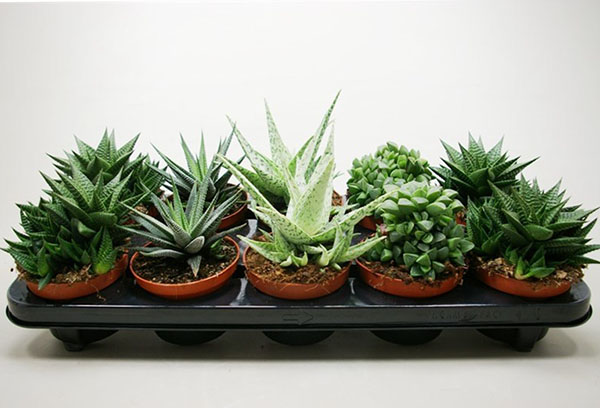
Plant care
How to water?
Moderate watering is the key to healthy development of Haworthia. In the summer, the plant is moistened 2-3 times a month, it all depends on the temperature conditions. If Haworthia is outdoors in summer, watering should be more abundant and frequent. In the shade, the substrate does not dry out so quickly, so it is moistened a little less often. The next watering can be carried out if the earth is almost completely dry. Winter watering is reduced to 1 time per month. Be sure to drain the water from the sump.

Watering the Hawortia must be done carefully so that water does not get between the leaves.
Top dressing
Fertilizing the plant begins in the spring, and stops with the onset of autumn. Top dressing is carried out once a month with means for cacti and succulents, diluting them with water 2 times more than recommended by the manufacturer. You can use granular fertilizers by adding them to the soil in the amount indicated on the package. An overdose will not happen, because beneficial substances are released only when the soil is moist, and haworthia is rarely watered.
Many owners of exotic Haworthia would like to accelerate the growth of the flower. This can be done by choosing fertilizers with a high content of phosphorus and potassium and less nitrogen. Nitrogen fertilization will cause the plant to stretch, resulting in loss of compact form and leaf cracking.

During the growing season, Hawortia is fed 1 time per month
Flowering period
At home, Haworthia rarely blooms. Around May, adult plants release long peduncles with nondescript flowers. Although there are varieties, for example, Haworthia navicular, with a rather interesting flowering. Experts recommend removing the peduncle immediately after it appears so that the plant does not waste extra energy. In addition, there are species for which flowering is an extremely undesirable process, since the plant dies immediately after it.

At home, the flowering of haworthia is a rare occurrence.
Dormant period
The dormant period of Haworthia falls in the winter. It lasts from November to March. At this time, the plant must be moved away from the central heating batteries to a cooler and brighter place with a temperature of + 10 ... + 12 ° С, but not lower than + 5 ° С. It is rarely watered - once a month. Top dressing is not applied.

The dormant period at Haworthia begins in winter
Errors in care, causes and methods of elimination - table
| Error | Cause | Elimination |
| The lower leaves look like boiled ones, they are easily separated from the plant. | Waterlogging of the soil has occurred. | Do not water the plant until the leaf turgor is restored. |
| The leaves lengthen, the rosette becomes loose and elongated. The color of the Haworthia becomes light green. | Lack of light. | Haworthia needs a bright, diffused light. Try to find a suitable place for the plant. |
| Brown spots appear on the leaves. Then the tips of the leaf plates begin to dry out. | Sunburn. | The plant should not be kept in direct sunlight, shade it or move it to another place. |
| The leaves turn pale, turn red or yellow. | Excess fertilization. | When applying fertilizers, adhere to the rate. Limit nitrogenous feeding. |
| The leaves are darkened and rotting. | Combination of low air temperature and too moist soil. | Increase the temperature and do not water the haworthia until the soil is dry. |
| Haworthia stops growing. | Low air temperature. | If this happens during a dormant period, then it should be so. If growth stops during the growing season, it is worth adjusting the room temperature. |
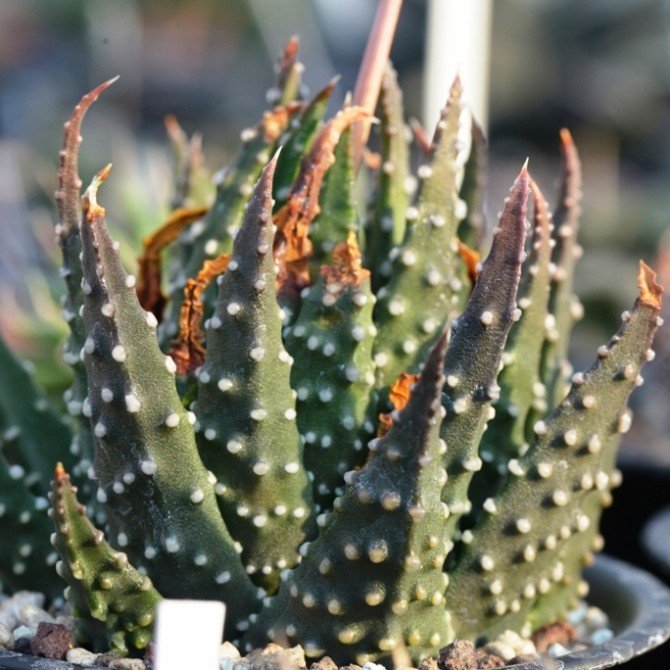
If Haworthia is sunburned, the tips of the leaves will turn brown.

